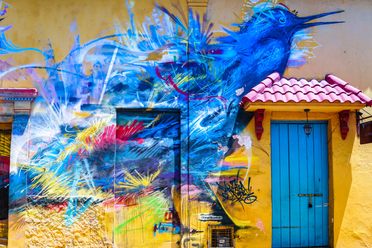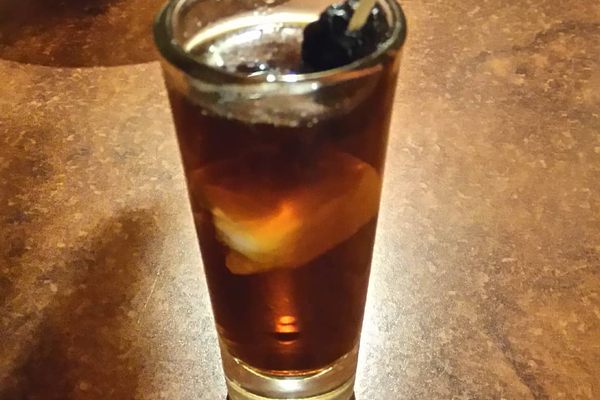Drinks
Chocolate Santafereño
This steamy concoction features a salty, melted surprise at the bottom of the mug: white cheese.
In Colombia, one of the birthplaces of cacao, sweet hot chocolate is accompanied by savory cheese.
Sometimes known as chocolate completo, chocolate santafereño comes in the form of breakable blocks, called pastillas, that contain cloves and cinnamon. Some are sweetened, but most aren’t―which means that a generous helping of sugar or panela (unrefined brown sugar) usually accompanies them. The bars are then placed into a chocolatera, an aluminum pot with warm milk or water in it, and stirred with a special wooden whisk known as a molinillo as they melt. With its bulbous bottom, the molinillo is instrumental in slowly stirring the chocolate into foamy perfection, which is achieved by taking the whisk into both hands and rubbing them together. Generous dollops of slightly salty white cheese (queso campesino) are added to the chocolate just before it’s served.
According to an old adage, the chocolate must be boiled exactly three times before serving―lest one gets a stomachache before reaching the cheese buried at the bottom.
While the cacao bean is native to Central and South America, it took a while for chocolate santafereño to become a specialty of Colombia’s chilly Andean regions. The Aztecs and Maya made a sacred drink that melded toasted cacao beans, spices, and water. When the Spanish conquistadors came to Central America, they weren’t fans of this drink, particularly its foaminess. Eventually, they came around to it.
Hot chocolate made its way to Europe, where it became a sweet, fashionable thing to sip throughout the 17th and 18th centuries. In her book The South American Table, Maria Kijac writes that when this revamped chocolate came back to Central and South America years later, it was adopted by upper-class Colombians and Venezuelans. Cacao was expensive in the 1800s, and drinking chocolate every day was a pricey habit.
But once culinary adaptations brought the price down, chocolate became a daily staple for miners and farmers in the region. Thanks to industrialization, chocolate became a central part of mountain diets and, in the latter half of the 19th century, a central part of late-afternoon snacking and socialization.
It’s unclear when cheese entered the mixture. But perhaps it made its way into the chocolate via the treats served alongside it: Pan de yuca (a large, flat cassava cheese bread) and almojábanas (a smaller, round cheese bread) are both traditionally topped with even more cheese.
Where to Try It
-
La Puerta Falsa
Cl. 11 #6-50, Bogotá, ColombiaThis Bogotá institution has been around for over 200 years and is the spot for no-frills santafereño home cooking, including chocolate.
Written By
 paulamejia
paulamejia
Sources
- books.google.com/books?id=K_liDAAAQBAJ&pg=PT89&lpg=PT89&dq=Chocolate+Santafere%C3%B1o+history&source=bl&ots=OaJwwOYdtD&sig=IDhnlBt920TccLoUWNeUgq7mQoM&hl=en&sa=X&ved=0ahUKEwi4yIHI3YHWAhXM34MKHX2-DiY4ChDoAQhMMAY#v=onepage&q=Chocolate%20Santafere%C3%B1o%20history&f=false
- www.eltiempo.com/archivo/documento/MAM-1500742
- issuu.com/archivodebogota/docs/chocolates
- books.google.com/books?id=hKVbCgAAQBAJ&pg=PA56&lpg=PA56&dq=1591+guatemala+cacao+tablet&source=bl&ots=JVFsautLzX&sig=wQM4c1uvxLZCjNLZMacc-Y-YgmY&hl=en&sa=X&ved=0ahUKEwiAvO7ImITWAhXo4IMKHYbWBaoQ6AEIKzAB#v=onepage&q=1591%20guatemala%20cacao%20tablet&f=false
- www.thedailymeal.com/travel/columbian-hot-chocolate-just-add-cheese
The Atlas Obscura Podcast is Back!


















